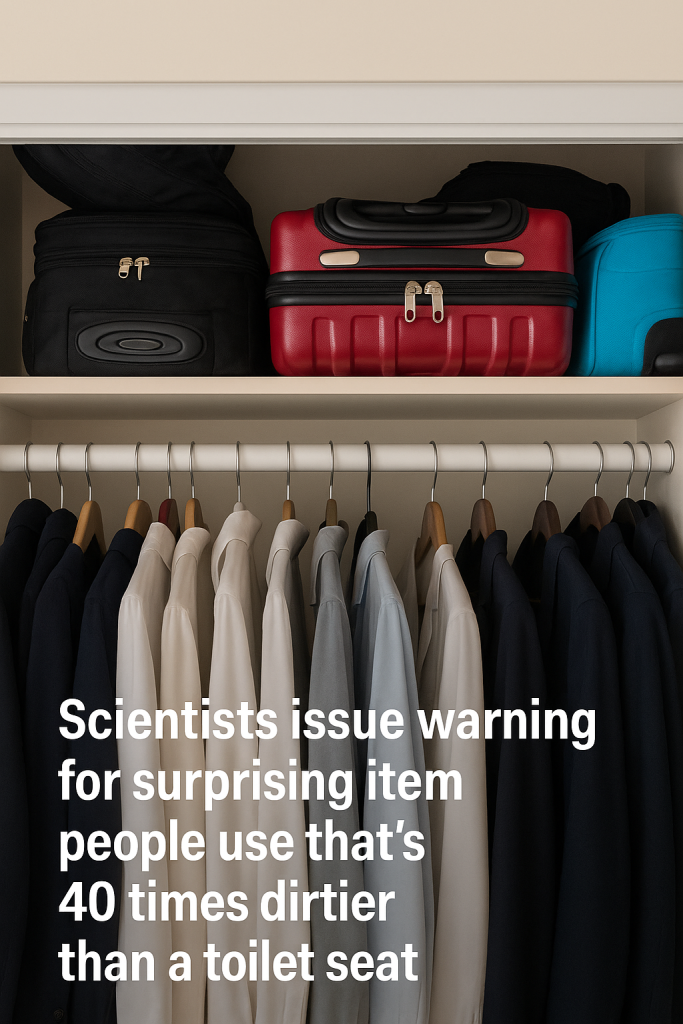In an unsettling revelation that has alarmed households worldwide, scientists have identified a surprising everyday object that harbors bacteria at levels up to 40 times higher than a toilet seat. The culprit? The humble kitchen sponge—a staple found in millions of homes yet rarely considered a significant health risk.
Recent studies conducted in 2024 have reinforced concerns about the cleanliness of kitchen sponges, which are often used daily to clean surfaces, utensils, and dishes. Microbiologists report that the warm, moist environment inside a sponge makes it an ideal breeding ground for harmful bacteria, including strains of Escherichia coli and Salmonella, both known to cause serious foodborne illnesses.
Why Sponges Are So Contaminated
The problem lies in the nature of the sponge’s material and its usage patterns. Sponges tend to retain food particles and moisture, creating a perfect microhabitat for bacteria to thrive. Unlike other kitchen tools that dry quickly or are regularly sanitized, many consumers often overlook the need to disinfect sponges regularly. This negligence allows bacteria to multiply rapidly, resulting in microbial populations far exceeding those found on typical bathroom surfaces.
Compared to a toilet seat, which often benefits from routine cleaning and disinfecting, kitchen sponges are subjected to frequent use but less frequent sanitation. The recent research measured bacterial density and found kitchen sponges can harbor bacterial colonies 20 to 40 times greater than those present on toilet seats.
Health Implications and Recommendations
The presence of harmful bacteria on kitchen sponges poses a significant risk of cross-contamination that can spread pathogens to other surfaces and ultimately to food. This increases the risk of food poisoning, with symptoms ranging from mild stomach upset to severe gastrointestinal illness requiring medical attention.
To reduce these risks, experts recommend regularly replacing kitchen sponges, ideally once a week, or sanitizing them thoroughly between uses. Effective methods include microwaving a damp sponge for 1–2 minutes, boiling it, or running it through the dishwasher with a high-temperature cycle. However, it is important to ensure sponges are wet before microwaving to prevent fire hazards.
Additionally, alternatives such as dishcloths that can be washed in hot water or silicone scrubbers that dry quickly and are easier to sanitize are gaining popularity among hygiene-conscious consumers.
Consumer Awareness on the Rise
The findings have sparked a growing dialogue on social media, where users are sharing their own hygiene practices and rethinking kitchen cleaning habits. Many express surprise at the revelation, noting that the kitchen sponge, a symbol of cleanliness, ironically represents one of the dirtiest items in the home.
Public health specialists urge the general population to practice vigilance when it comes to kitchen hygiene. “While the toilet seat feels like the ultimate germ hotspot, the kitchen sponge is a silent threat that many underestimate,” said a leading microbiologist involved in the research. “Simple changes can make a huge difference in preventing bacterial spread.”
As this new information comes to light, households around the world are encouraged to rethink how they maintain cleanliness in their kitchens—a space central to health and wellbeing.
Stay tuned to emerging studies and health guidelines to keep your home safe and your family protected.



